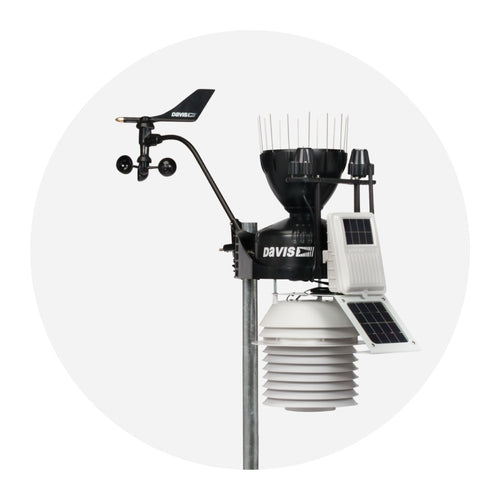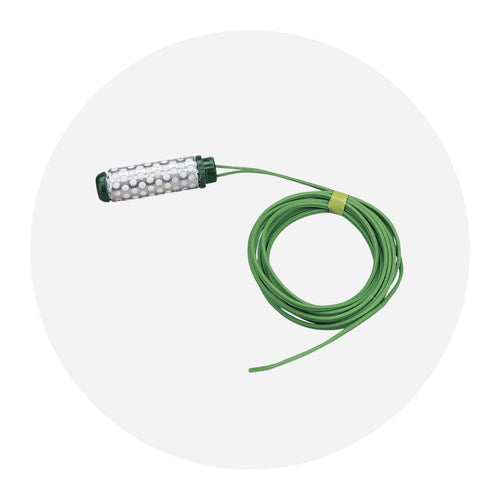A sailboat tacking indicator, also known as a wind vane reference tab, a windward/leeward indicator, or a telltale (small strip of fabric), is a device or visual reference used to indicate the boat's progress and angle of attack during a tack. It helps the sailor determine the optimal time to turn the boat and adjust the sails for maximum efficiency.
The indicator is typically a reference tab mounted to a wind vane or a small strip of fabric or lightweight material attached to the sail or rigging. It is positioned in a way that allows the sailor to observe the airflow and wind direction, to adjust the boat's angle relative to the wind. By observing the flow of wind, the sailor can make adjustments to the sails and steering to achieve the desired angle of attack and maximize the boat's speed.
The indicator is especially useful when sailing upwind, where small changes in sail trim and boat angle can have a significant impact on performance. It provides real-time feedback on the effectiveness of the sail settings and helps the sailor maintain the optimal course and sail balance during a tack.
The sailboat's angle of attack refers to the angle at which the sails are positioned in relation to the direction of the wind. It is a crucial factor in determining the boat's speed and efficiency while sailing.
Some of the tacking angles and strategies are:
Beam Reaching:
 Sailboat beam reaching refers to sailing with the wind coming from the side of the boat, approximately perpendicular to the boat's centerline. It is a point of sail between sailing upwind (close-hauled) and sailing downwind (running). When beam reaching, the sails are trimmed to allow the wind to fill them fully and generate maximum power. The boat's course is typically at a 90-degree angle to the wind direction, with the sails adjusted to maintain a balanced and efficient sail shape. Beam reaching can be a comfortable and fast point of sail, as the boat is not sailing directly into the wind and does not experience excessive heeling or excessive pressure on the sails. It allows for good boat speed and a relatively stable and balanced ride.
Sailboat beam reaching refers to sailing with the wind coming from the side of the boat, approximately perpendicular to the boat's centerline. It is a point of sail between sailing upwind (close-hauled) and sailing downwind (running). When beam reaching, the sails are trimmed to allow the wind to fill them fully and generate maximum power. The boat's course is typically at a 90-degree angle to the wind direction, with the sails adjusted to maintain a balanced and efficient sail shape. Beam reaching can be a comfortable and fast point of sail, as the boat is not sailing directly into the wind and does not experience excessive heeling or excessive pressure on the sails. It allows for good boat speed and a relatively stable and balanced ride.
Broad Reaching:

Sailboat broad reaching refers to sailing with the wind coming from behind the boat at an angle. It is a point of sail between sailing beam reach and sailing downwind (running). When broad reaching, the sails are adjusted and trimmed to capture the maximum amount of wind and generate forward propulsion. The boat's course is typically at an angle to the wind, allowing the sails to be filled with wind from behind. Broad reaching can be an enjoyable and fast point of sail, as the boat benefits from the wind pushing it from behind. It can provide a smooth and stable ride, with the boat often heeling slightly to one side as the wind fills the sails.
Running Downwind:

Running downwind refers to sailing with the wind coming directly from behind the boat. It is a point of sail where the boat is essentially following the wind, and the sails are set to catch the wind from behind. When running downwind, the sails are typically let out as much as possible to create a large surface area to catch the wind. This allows the boat to maximize its speed and take advantage of the wind's pushing force. Running downwind can be a fast and exhilarating point of sail, as the boat is propelled by the wind directly from behind. The boat's motion is typically smooth and stable, with minimal heeling.
However, it's important to note that running downwind can present some challenges. The sail configuration for running downwind is known as "wing on wing," where the mainsail is let out on one side of the boat, and a headsail or spinnaker is set on the opposite side. This configuration requires careful attention to prevent accidental jibes, where the wind suddenly changes direction and the sails swing across the boat.
Going to Weather:

When a sailboat is "going to weather," it means that the boat is sailing as close to the wind as possible, typically upwind or close-hauled. This is the direction opposite to the wind, where the boat is trying to make progress against the wind's force. Going to weather can be a challenging point of sail, as the boat is sailing against the wind and may experience increased resistance and heeling. It requires careful attention to boat handling, sail trim, and course adjustments to maintain speed and make progress towards the desired destination. Sailboats designed for racing or high-performance cruising are often optimized for going to weather, with features such as a keel and hull shape that provide good upwind performance. These boats can sail close to the wind and maintain good speed and efficiency while going to weather.





















